Plant Based Dessert Recipes: Your Simplified Guide to Natural Baking
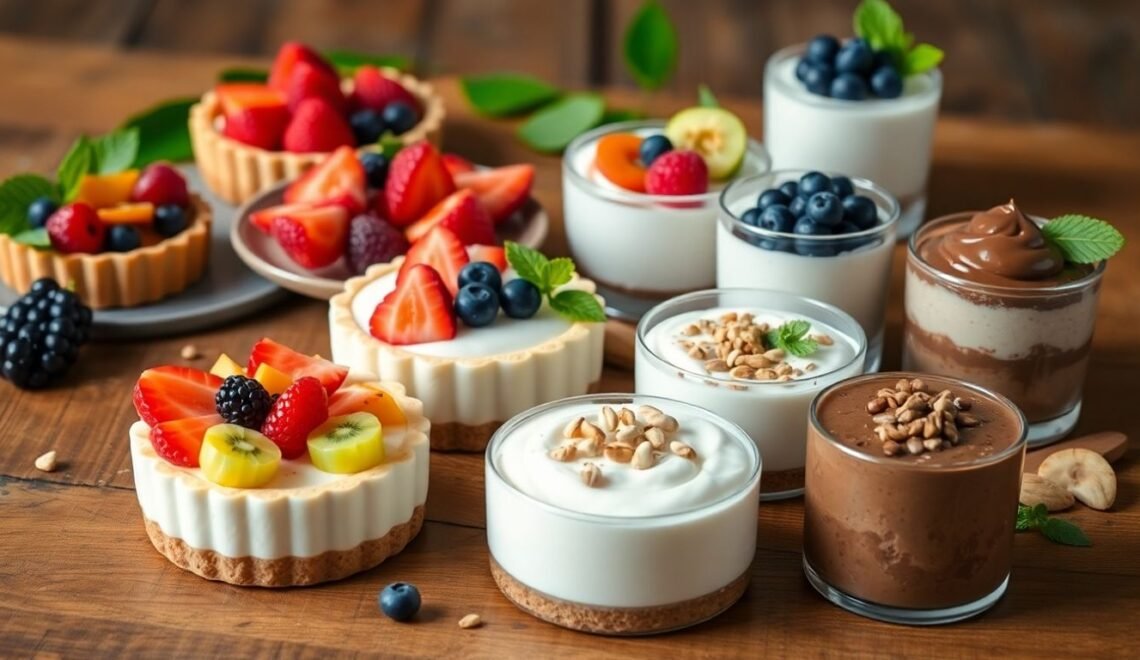
Key Takeaways
Ever tried whipping up a dessert without the usual eggs, milk, or butter? If not, you’re missing out on the tasty world of plant based dessert recipes. These treats are not just for vegans; they are for anyone looking to enjoy sweets in a healthier way. From cookies to cakes, you can make almost any dessert plant-based with a few simple swaps. Trust me, it’s easier than you think, and the results are delicious!
- Plant based desserts skip the animal products, using only plant ingredients.
- These desserts can be healthier, often lower in fats and sugars.
- Common ingredients include almond milk, coconut oil, and maple syrup.
- You don’t need fancy tools; basic kitchen gear will do.
- With the right ingredients, plant based desserts can taste just as good as traditional ones.
Understanding Plant Based Dessert Recipes

What Makes a Dessert Plant Based?
Plant-based desserts are all about using ingredients that come from plants. This means no animal products like eggs, milk, or butter. Instead, you use things like fruits, nuts, and grains. These allergy-friendly dessert recipes are perfect for people who want egg-free dessert recipes or need meat-free dessert options.
Benefits of Plant Based Desserts
Choosing plant-based sweets isn’t just about avoiding animal products. It’s also about embracing health. These desserts often have less saturated fat and more fiber. They can be part of a healthy lifestyle, offering premium vegan desserts without the guilt. Plus, many are allergen-free desserts, making them a safe choice for those with food sensitivities.
Common Ingredients in Plant Based Baking
- Fruits and Vegetables: Bananas and applesauce are great for adding moisture and sweetness.
- Alternative Flours: Almond flour and coconut flour are popular in flourless vegan desserts.
- Natural Sweeteners: Maple syrup and agave nectar are often used instead of refined sugars.
Baking without animal products can seem tricky at first, but once you get the hang of it, you’ll find it’s easier than you thought. The best plant-based sweets are not only delicious but also kind to your body and the planet.
These plant-based gluten-free treats are perfect for everyone, from those seeking vegan celiac-friendly desserts to folks just wanting healthy alternative desserts. Whether you’re making dairy-free wheat-free treats or exploring wheat-free vegan treats, the options are endless. Dive into the world of healthy vegan dessert options and discover your new favorite treat!
Essential Tools for Plant Based Baking
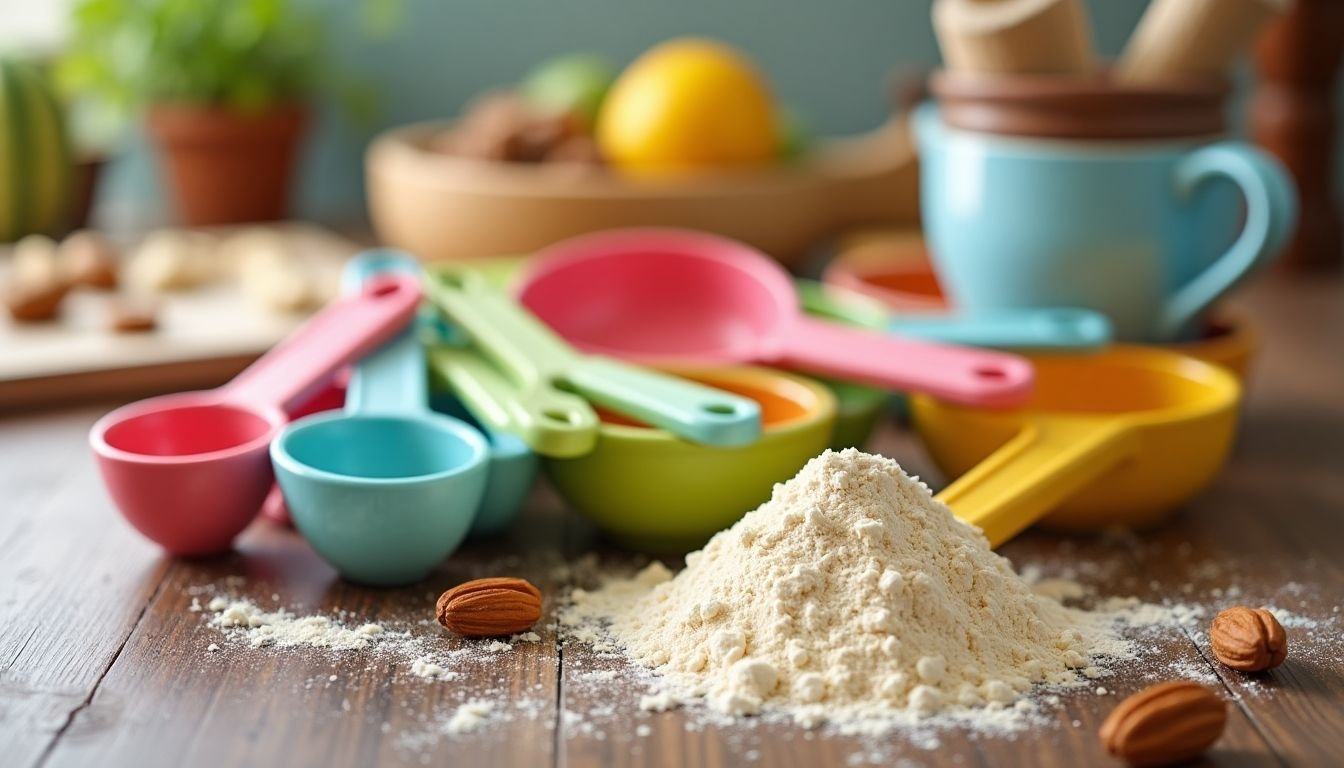
Must-Have Kitchen Equipment
When you’re diving into the world of high-quality vegan baking, having the right tools can make all the difference. Investing in essential baking tools and supplies can transform your kitchen experiments into successful creations. Here’s what you need:
- Mixing Bowls: A set of different sizes helps in mixing dry and wet ingredients separately.
- Measuring Cups and Spoons: Accuracy is key in baking, so these are non-negotiable.
- Rubber Spatulas: Perfect for scraping down the sides of bowls to ensure all ingredients are combined.
Choosing the Right Baking Pans
Selecting the right baking pans can affect how your desserts bake and taste. Consider these options:
- Non-Stick Pans: Great for easy release of cakes and brownies.
- Glass Baking Dishes: Ideal for pies and cobblers, as they conduct heat evenly.
- Silicone Molds: Perfect for muffins and cupcakes, offering flexibility and easy cleaning.
Using Blenders and Food Processors
Blenders and food processors are not just for smoothies; they are crucial in plant-based baking for:
- Nut Butters: Creating smooth, creamy nut butters for recipes.
- Doughs and Batters: Ensuring a consistent blend of ingredients.
- Pureeing Fruits: For natural sweeteners or moist elements in cakes.
Baking without traditional ingredients might seem daunting, but with the right tools, it becomes an exciting adventure. Embrace the journey of plant-based baking and let your creativity flow.
Sweeteners in Plant Based Dessert Recipes
Natural Sweeteners to Use
When it comes to plant-based desserts, choosing the right sweetener can make all the difference. Natural options like maple syrup, agave, and coconut sugar are popular because they add a unique flavor and are less processed than refined sugars. These sweeteners not only enhance the taste but also provide some nutritional benefits. For instance, coconut sugar contains small amounts of inulin, which can help with digestion. Dates are another fantastic choice, offering a rich sweetness along with fiber and essential nutrients.
Avoiding Refined Sugars
Refined sugars are often stripped of their nutrients and can lead to spikes in blood sugar levels. By opting for alternatives like date paste or raw honey, you can keep your desserts wholesome and satisfying. Vegan dessert recipes often recommend these natural sweeteners for their health benefits and lower glycemic index. It’s a simple switch that can make your treats both delicious and nourishing.
How to Substitute Sweeteners
Substituting sweeteners in recipes can be a bit tricky, but it’s definitely doable with a little practice. If a recipe calls for granulated sugar, you might use 2/3 to 3/4 cup of a less refined sugar like pure cane or date sugar instead. This adjustment is often recommended in vegan chocolate cake recipes to achieve the right level of sweetness. When using liquid sweeteners like maple syrup, you might need to reduce other liquids in the recipe to maintain the right consistency. Start with small adjustments and taste as you go to find the perfect balance for your desserts.
Switching to natural sweeteners in your baking not only improves the nutritional profile of your desserts but also offers a chance to experiment with flavors and textures. It’s a journey worth taking for anyone who loves baking and wants to do it in a healthier way.
Exploring Plant Based Flours

Types of Plant Based Flours
When it comes to plant-based baking, the flour you choose can make a big difference. There are tons of options out there, but here are a few to consider:
- Almond Flour: This is a popular choice for those looking for grain-free vegan options. It’s made from blanched almonds and is great for adding a nutty flavor to your desserts.
- Coconut Flour: Absorbs a lot of moisture, so you’ll need to adjust your liquid ingredients. It’s perfect for gluten-free and low-carb baking.
- Chickpea Flour: Packed with protein, this flour is a great substitute in savory and sweet dishes alike.
- Sprouted Whole Wheat Flour: One Degree Organic Foods offers a sprouted whole wheat flour that’s non-GMO and vegan, perfect for traditional baking with a plant-based twist.
Gluten-Free Flour Options
For those avoiding gluten, there are plenty of plant-based wheat alternatives:
- Rice Flour: A staple in gluten-free baking, rice flour is mild in flavor and works well in cookies and cakes.
- Buckwheat Flour: Despite its name, buckwheat is totally gluten-free and offers a hearty flavor.
- Quinoa Flour: This one is a bit more exotic but offers a unique taste and is high in protein.
Experimenting with different flours can open up a world of flavors and textures in your baking. It’s all about finding what works best for your taste and dietary needs.
How to Store Plant Based Flours
Storing your plant-based flours properly is key to keeping them fresh and ready for your next baking adventure. Here’s how:
- Cool, Dark Place: Keep your flours in a cool, dark spot to prevent them from going rancid.
- Airtight Containers: Use airtight containers to protect from moisture and pests.
- Refrigeration: For flours like almond or coconut, consider refrigeration to extend their shelf life.
Remember, using a variety of flours not only boosts the nutritional value of your desserts but also enhances their flavors. Whether you’re sticking to gluten-free or exploring grain-free vegan options, there’s a plant-based flour out there for you. For more ideas on low carb vegan recipes, check out our collection that emphasizes whole foods and healthy eating.
Dairy Alternatives for Creamy Desserts
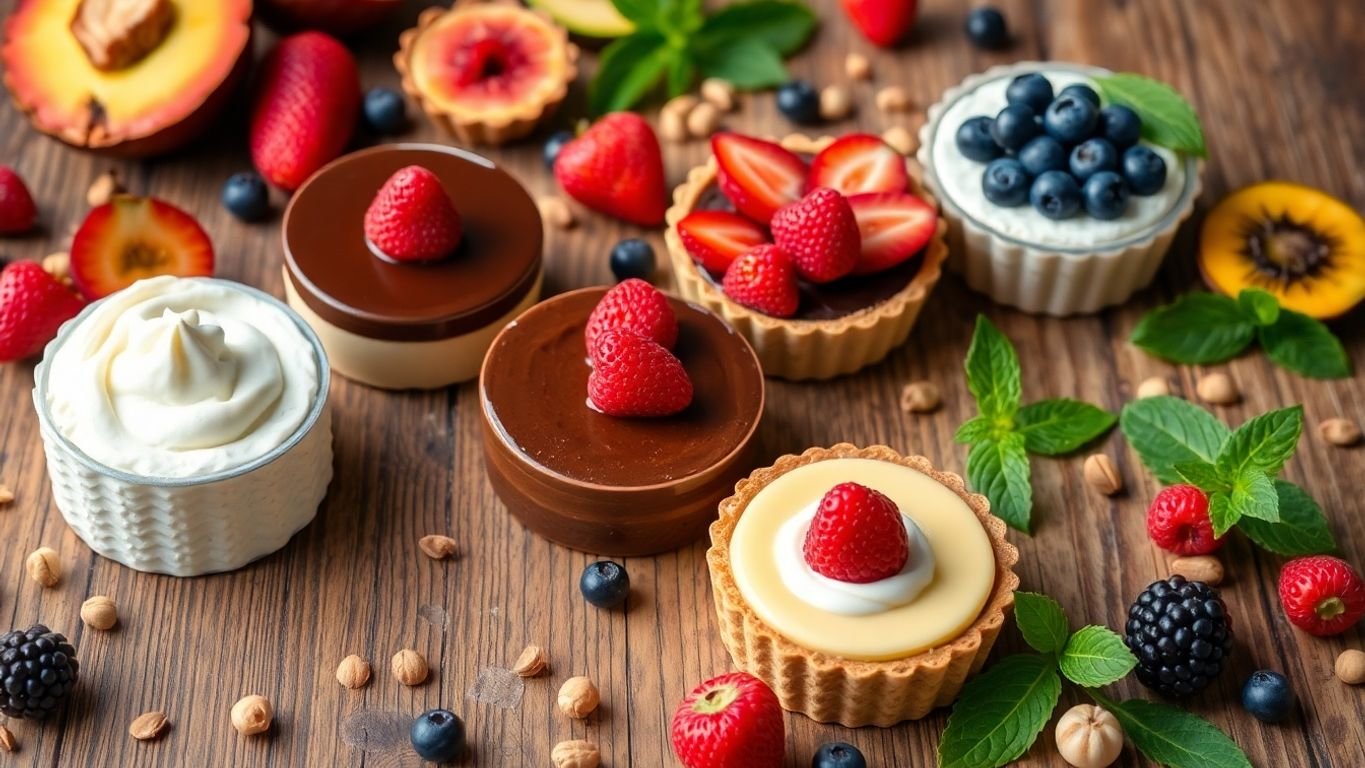
Using Nut Milks in Baking
Nut milks, like almond or cashew, are fantastic for creating creamy, dairy-free sweet treats. They’re not just for drinking; they can replace regular milk in most baking recipes. Here’s how you can use them:
- Almond Milk: Light and slightly nutty, perfect for cakes and muffins.
- Cashew Milk: Creamier and richer, ideal for custards and puddings.
- Hazelnut Milk: Offers a unique flavor, great for chocolate desserts.
For a versatile and dairy-free alternative, mix different nut milks to replicate heavy cream in recipes. This can be a game-changer for those looking to enjoy dairy-free gluten-free sweets.
Coconut Cream and Its Uses
Coconut cream is a superstar in dairy-free baking. It’s thick, creamy, and adds a subtle coconut flavor. Here’s how you can use it:
- Whipped Topping: Chill it, whip it, and you’ve got a perfect topping for pies.
- Sauces: Create creamy sauces for desserts like caramel or chocolate.
- Puddings: Combine with cocoa for a rich Vegan Chocolate Coconut Cream Pudding.
Coconut cream is a must-have in your pantry if you’re diving into dairy-free sweet treats. It transforms desserts into luscious delights without any dairy.
Making Your Own Plant Based Creams
Creating your own plant-based creams at home is easier than you think. You can make them using simple ingredients and a blender:
- Choose Your Base: Start with soaked nuts like cashews or almonds.
- Blend: Add water and blend until smooth.
- Flavor: Sweeten with natural sweeteners like maple syrup or dates.
Homemade creams offer a fresh and customizable option for those who want to keep their desserts both delicious and dairy-free. They’re perfect for topping, filling, or even enjoying on their own.
By using these dairy alternatives, you can effortlessly craft desserts that are not only creamy but also align with a low-carb vegan lifestyle. Enjoy experimenting with these ingredients to create your next favorite dessert!
Egg Substitutes in Plant Based Baking
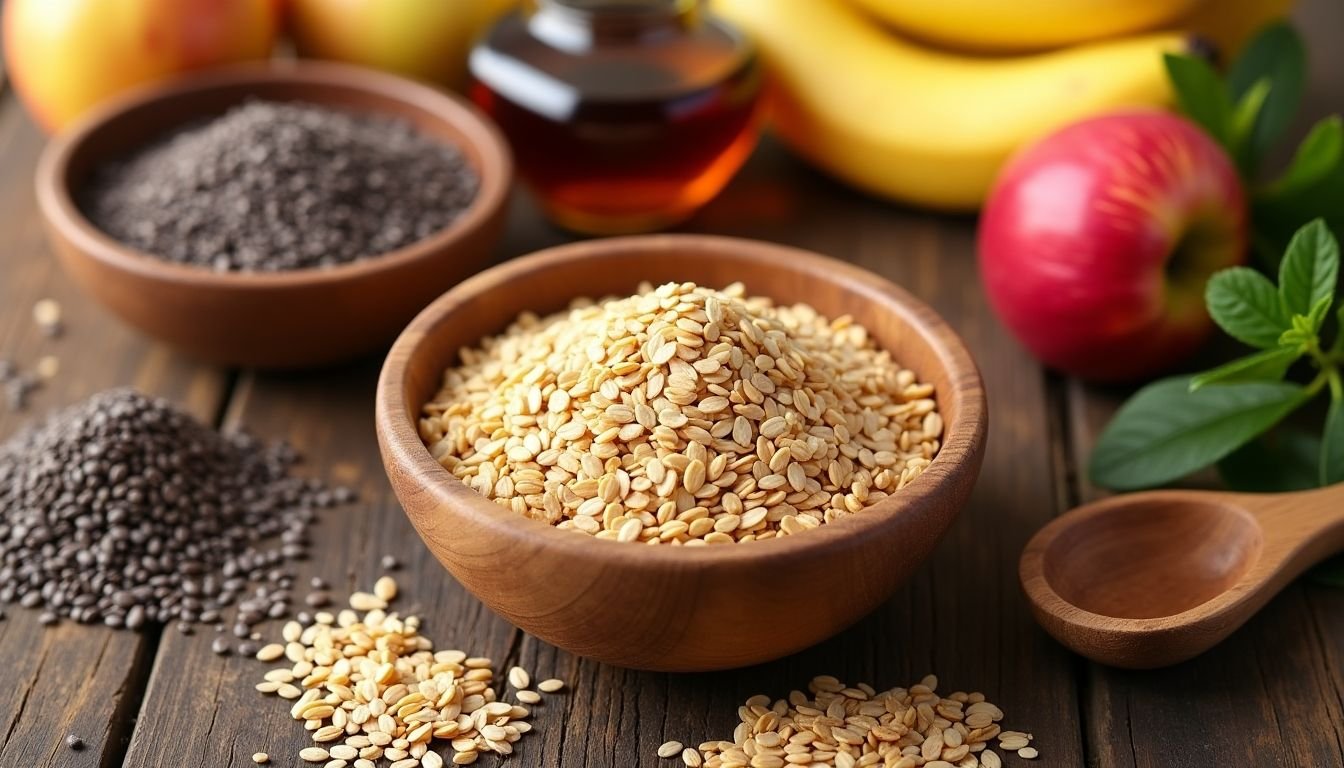
Flaxseed and Chia Seeds as Binders
Flaxseeds and chia seeds are fantastic natural binders used in vegetarian baking ideas. They help mimic the texture and role of eggs in recipes. To make a “flax egg,” mix one tablespoon of ground flaxseed with three tablespoons of water and let it sit for a few minutes until it thickens. Chia seeds work similarly; just swap flaxseed with chia seeds for the same effect.
Using Applesauce and Bananas
Applesauce and bananas are not just for snacking. They can replace eggs in plant-based gluten-free baking, especially in recipes needing moisture. For every egg replaced, use about a quarter cup of applesauce or mashed banana. This substitution works wonders in muffins, pancakes, and quick breads, adding a bit of natural sweetness too.
Commercial Egg Replacers
If you are looking for convenience, commercial egg replacers are a reliable choice. These products are specifically formulated to mimic eggs’ binding and leavening properties. They are often made from potato starch, tapioca, and other plant-based ingredients, making them perfect for those tackling plant-based gluten-free baking challenges.
Baking without eggs might seem tricky at first, but with the right substitutes, you can achieve delicious results. Experiment with different options to find what suits your recipe and taste best.
Creating Rich Flavors with Spices and Extracts
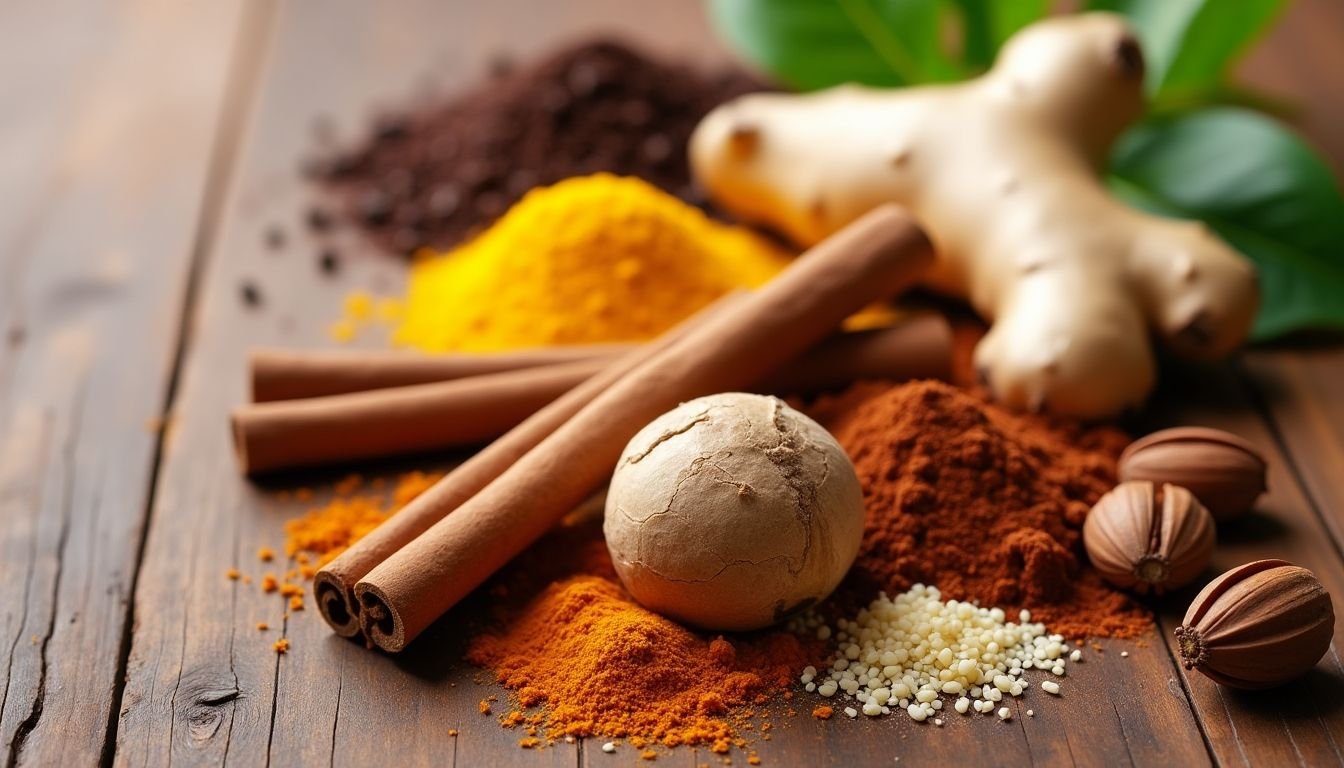
Popular Spices for Desserts
When it comes to plant-based desserts, spices are your best friends. They can transform a simple dish into something extraordinary. Cinnamon, nutmeg, and ginger are some of the most popular spices used in these recipes. They not only add warmth but also enhance the natural sweetness of ingredients. For instance, a pinch of cinnamon can elevate a basic apple pie into a comforting classic. If you’re feeling adventurous, try cardamom or star anise for a unique twist. These spices can bring a depth of flavor that’s both unexpected and delightful.
Using Vanilla and Other Extracts
Vanilla extract is a staple in dessert making, and for good reason. It brings out the flavors in other ingredients, making everything taste better. But don’t stop at vanilla. Almond extract can add a sweet, nutty aroma to your baked goods. Peppermint extract is perfect for holiday-themed treats or when you want a refreshing kick. There is also a world of other extracts like lemon, orange, and even lavender. Each one offers a different flavor profile that can be the star of your dessert. Just remember to use them sparingly; a little goes a long way.
Balancing Flavors in Baking
Creating the perfect dessert is all about balance. Too much spice or extract can overpower the dish, while too little can leave it tasting bland. Here are a few tips to help you get it just right:
- Start small: You can always add more spice or extract, but you can’t take it out once it’s in.
- Taste as you go: This is especially important when trying a new combination of flavors.
- Pair wisely: Some spices and extracts complement each other beautifully, like cinnamon and vanilla or ginger and lemon.
Finding the right balance in your desserts is like creating a symphony; each element should complement the others to create a harmonious result.
By mastering the use of spices and extracts, you can create plant-based desserts that are not only delicious but also memorable. Whether you’re baking for yourself or for others, these little additions can make a big difference in the final product.
Decorating Plant Based Desserts

Frosting and Icing Options
When it comes to decorating plant-based desserts, choosing the right frosting or icing can really make your gourmet gluten-free treats stand out. Vegan royal icing is a popular choice, offering a smooth and easy-to-make solution for decorating cakes and cookies. You only need a few simple ingredients to whip up this gluten-free delight. Some other options include coconut cream-based frostings or cashew buttercream, both providing a rich texture and flavor without the dairy.
Using Fresh Fruits and Nuts
Adding fresh fruits and nuts is a fantastic way to enhance the visual appeal and taste of your desserts. Consider topping a cake with slices of strawberries or a sprinkle of blueberries for a burst of color. Nuts like almonds or walnuts not only add a crunchy texture but also bring a nutty flavor that complements many sweet dishes. Plus, they are a great way to keep things natural and wholesome.
Creative Presentation Ideas
Presentation is key when it comes to desserts. Here are some creative ideas to make your plant-based desserts look as good as they taste:
- Layer it up: Create layers with different flavors and textures, like alternating layers of sponge and cream.
- Use molds: Shape your desserts into fun forms using silicone molds.
- Edible flowers: Decorate with edible flowers for a touch of elegance and color.
Remember, decorating is not just about looks; it’s about making your desserts inviting and appetizing. Experiment with different styles and ingredients to find what works best for your creations.
Troubleshooting Common Baking Issues
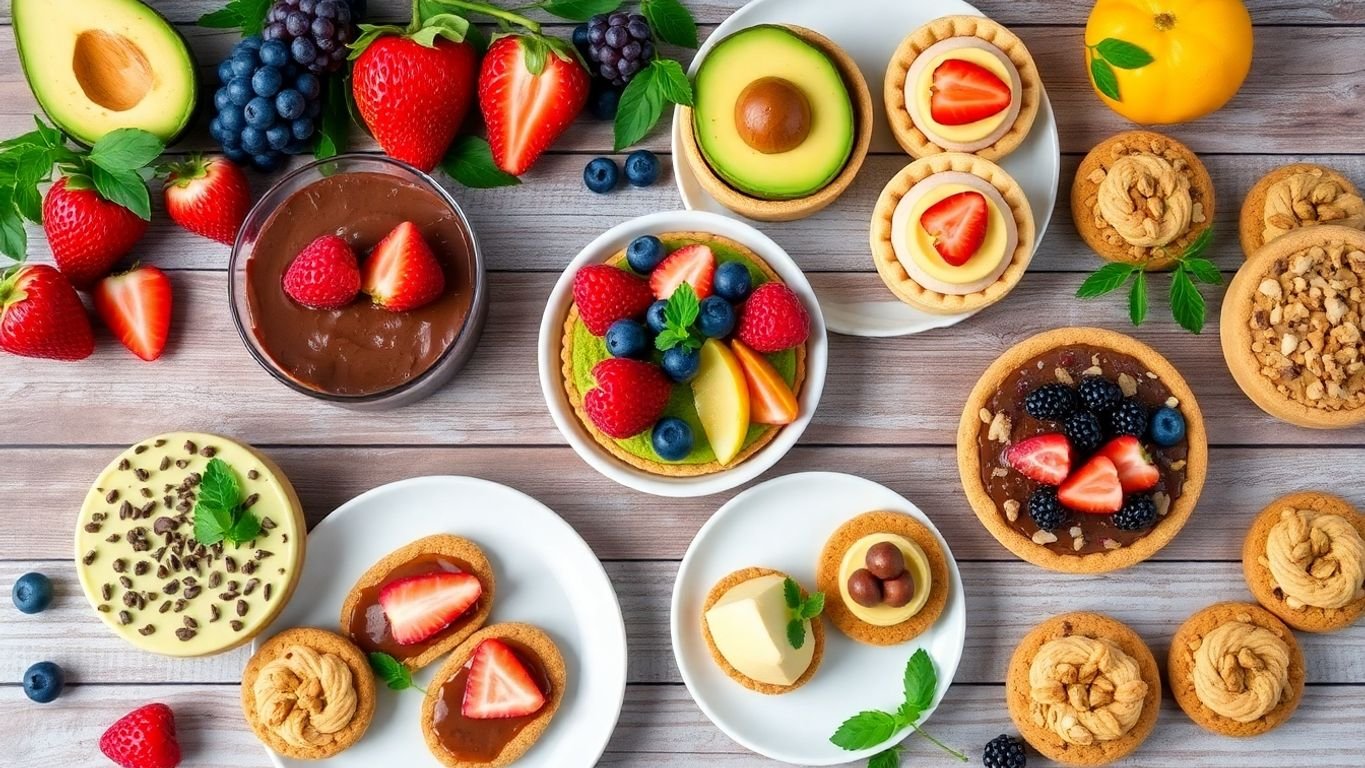
Why Your Cake Didn’t Rise
Baking a cake only to find it flat as a pancake can be super frustrating. The most common culprit is expired baking powder or baking soda. Always check the expiration date before using these leavening agents. Another reason could be overmixing your batter, which knocks out all the air bubbles needed for a good rise. Lastly, make sure your oven is properly preheated to the right temperature—an oven thermometer can be a baker’s best friend.
Fixing Dry or Crumbly Textures
Nobody wants a cake that crumbles at the slightest touch. If your desserts are turning out dry, it might be due to overbaking. Keep a close eye on your timer and start checking a few minutes before the suggested time. Also, consider the type of flour you’re using. Some flours absorb more moisture than others. Adding a bit more liquid or fat to your batter can help retain moisture.
Adjusting Baking Times and Temperatures
Every oven is a little different, and sometimes you need to play around with baking times and temperatures to get it just right. If your baked goods are consistently undercooked, try increasing the temperature by 25°F. Conversely, if they’re overcooked or burnt, lower the temperature and extend the baking time. Remember, practice makes perfect, and keeping a baking journal can help track what works best.
Baking isn’t just about following a recipe—it’s about understanding your ingredients and your oven. With patience and a bit of trial and error, you’ll be able to troubleshoot and fix any baking issues that come your way.
Storing and Preserving Plant Based Desserts
Best Practices for Freezing Desserts
Freezing is a great way to keep your plant-based desserts fresh for longer periods. Wrap each dessert tightly in plastic wrap or aluminum foil to prevent freezer burn. For items like cakes or brownies, consider slicing them into individual portions before freezing. This way, you can easily grab a single serving without having to thaw the entire dessert. Label each package with the date and type of dessert to keep track of what’s in your freezer.
How to Keep Desserts Fresh Longer
To extend the shelf life of your plant-based treats, store them in airtight containers. This helps to maintain their moisture and flavor. Desserts like cookies or muffins can be kept at room temperature for a few days, but for longer storage, consider refrigerating them. Remember to let them cool completely before sealing them up to avoid condensation, which can make them soggy.
Reheating Tips for Baked Goods
Reheating plant-based desserts can be tricky, but with a few tips, you can enjoy them as if they were freshly baked. For cakes and muffins, a few seconds in the microwave can do wonders. If you’re dealing with cookies, try reheating them in a preheated oven at a low temperature for a few minutes to regain their crispiness. Always keep an eye on the desserts to prevent overcooking, which can lead to dryness.
Proper storage and reheating techniques can make a significant difference in the taste and texture of your plant-based desserts. With a little care, you can enjoy your delicious creations days or even weeks after baking them.
Wrapping It Up
So there you have it, folks! Plant-based desserts aren’t just for the health nuts or the vegans anymore. They’re for anyone who loves a good sweet treat without all the guilt. Whether you’re whipping up a batch of cookies or trying your hand at a fancy cake, there’s a plant-based recipe out there that’ll hit the spot. And the best part? You don’t have to be a pro baker to pull it off. With just a few simple ingredients and a little bit of time, you can create something delicious and satisfying. So next time you’re in the mood for dessert, why not give plant-based a try? You might just surprise yourself with how tasty it can be. Happy baking!
Frequently Asked Questions
What are plant-based desserts?
Plant-based desserts are sweet treats made without using animal products like milk, eggs, or butter. They use ingredients from plants such as fruits, nuts, and grains.
Why choose plant-based desserts?
Choosing plant-based desserts can be healthier and better for the environment. They often have less saturated fat and no cholesterol, and they are suitable for vegans.
What can I use instead of eggs in baking?
You can use flaxseed meal mixed with water, mashed bananas, or applesauce as substitutes for eggs in baking recipes.
How do I make desserts creamy without dairy?
To make creamy desserts without dairy, you can use coconut cream, almond milk, or make your own nut-based creams.
Are plant-based desserts always healthy?
Not always. While they can be healthier, some plant-based desserts might still have a lot of sugar or unhealthy fats. It’s important to check the ingredients.
What sweeteners can I use instead of sugar?
You can use natural sweeteners like maple syrup, agave nectar, or dates to sweeten desserts instead of regular sugar.
Can I make gluten-free plant-based desserts?
Yes, you can use gluten-free flours like almond flour or rice flour to make plant-based desserts that are also gluten-free.
How do I store plant-based desserts?
Store plant-based desserts in airtight containers. You can keep them in the fridge or freezer to make them last longer.
